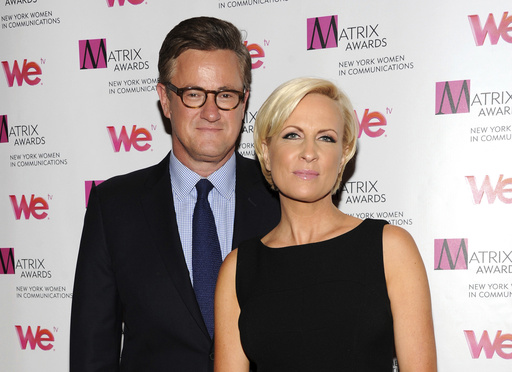
Recent reactions to the meeting between MSNBC’s “Morning Joe” hosts, Joe Scarborough and Mika Brzezinski, and President-Elect Donald Trump have sparked a notable debate about journalism standards. Critics of the pair were vociferous, questioning the integrity of the meeting itself. Jim VandeHei, co-founder of Axios and Politico, defended the couple on social media, suggesting that it is essential for media figures to engage with political leaders to enhance reporting.
However, it is critical to note that “Morning Joe” functions differently from traditional news programs. Scarborough, a former congressman, and Brzezinski, an experienced journalist, frequently expressed their opinions on the political landscape during their show, often advocating for Democratic candidates like Kamala Harris and condemning Trump’s actions. This inconsistency raised eyebrows, especially considering their portrayal of integrity while simultaneously engaging with someone they criticized as a potential dictator.
The backlash was immediate and severe, with social media criticizing the hosts. Many viewers felt that meeting with Trump was unnecessary and inappropriate, leading to a notable decrease in viewership numbers following the announcement. “Morning Joe” started the week with 770,000 viewers, a significant dip from its average of 1.09 million. Over the next few days, the audience dropped further to 680,000 and then to 647,000, before showing a slight recovery with 707,000 viewers on Thursday. These figures highlight that audiences today are often unforgiving, particularly in a polarized media landscape, where viewers expect news to align with their political beliefs.
This shift is not isolated; it reflects a broader trend where traditional news organizations struggle with maintaining credibility and audience traction. The Washington Post recently faced a similar backlash, reportedly losing about 250,000 subscribers after opting not to endorse a presidential candidate. Historically, many newspapers operated with an unabashedly partisan stance, but that has changed over the years, especially post the rise of Fox News, which catered to a conservative base that felt underserved by mainstream media.
Currently, there is a thriving industry that caters to those seeking content that reflects their viewpoints without contradicting narratives. The 2024 campaign has already demonstrated a clear preference among politicians for platforms like podcasts that grant them a friendly reception and expansive reach. Trump’s appearances on various podcasts, such as Joe Rogan’s, indicate the shift away from traditional news outlets.
Former journalists, such as Megyn Kelly, illustrate how lucrative opinion-based media can be today. After previously challenging Trump during a Fox News debate, Kelly’s attempt to pivot to NBC News didn’t yield the anticipated results. She later transitioned to a successful podcast that resonates with a conservative audience.
In the cable news landscape, CNN has attempted to uphold a façade of neutrality, which has significantly affected its viewership, dropping from 9.1 million viewers on election night 2020 to 4.7 million in the subsequent coverage. O’Brian, the outgoing head of news at E.W. Scripps Co., acknowledged the challenges of sustaining a 24-hour news channel dedicated to non-partisan journalism, pointing out a growing exhaustion with the hyper-partisan climate.
Scarborough and Brzezinski’s work environment on “Morning Joe” reflects these complex dynamics. While Sesno noted their skills as hosts, he highlighted that they do not engage in the type of investigative journalism that seeks objective truths. Following Scarborough and Brzezinski’s meeting with Trump, MSNBC’s legal contributor warned against normalizing the president, highlighting the differing perspectives among media figures.
Despite differing opinions about their meeting with Trump, some argue that maintaining open lines of communication with political figures can be essential for informative programming. A thoughtful approach is necessary, especially since the current media landscape has created a craving for more traditional journalism. O’Brian has observed a desire among audiences for nonpartisan reporting, asserting that a return to foundational journalistic principles could emerge from the current climate of exhaustion and polarization.
